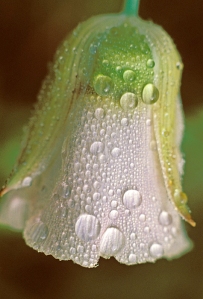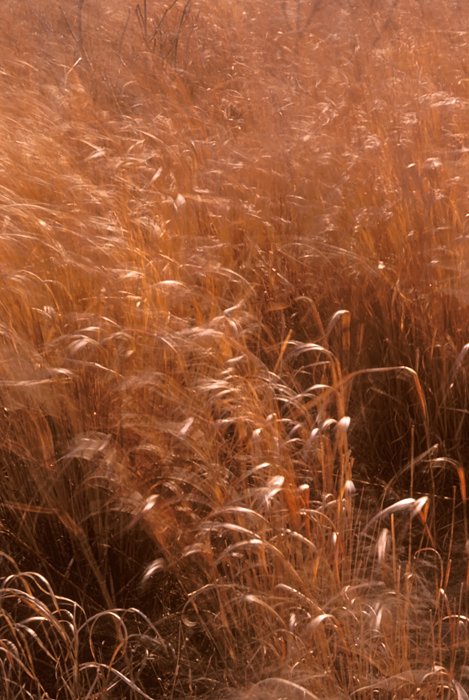Alliteration
Alliteration is a literary technique that adds a lyrical touch to writing with the repetition of initial consonant sounds. “Making music” is an example. In Why Does It Rain I used alliteration to add a poetic touch to a scientific topic: the water cycle. There are seven examples in this excerpt. You can check your findings in the highlighted section below.
Wrapped in Water
Can you tell when it is going to rain?
What are the clues?
Sometimes the wind
whisks through the grass
or sweeps up swirls of dirt.
Tree limbs creak and sway.
Their leaves flutter as if they might fly away.
Gray clouds shade the sun.
The dark of dusk comes during the day.
Then the rain falls.
It may plop down in plump drops
like pounding feet.
Or it may drizzle in drips like little tiptoes.
When the rain ends,
the air smells cool and clean.
It seems as though
a window has opened in the sky.
Wrapped in Water
Can you tell when it is going to rain?
What are the clues?
Sometimes the wind
whisks through the grass
or sweeps up swirls of dirt.
Tree limbs creak and sway.
Their leaves flutter as if they might fly away.
Gray clouds shade the sun.
The dark of dusk comes during the day.
Then the rain falls.
It may plop down in plump drops
like pounding feet.
Or it may drizzle in drips like little tiptoes.
When the rain ends,
the air smells cool and clean.
It seems as though
a window has opened in the sky.
“Plop, Plump, and Pounding” are near alliteration. Pound does not begin with the blend “pl.”
You will no doubt introduce your children to alliteration in language arts class. But to ensure that they will incorporate it into their writing, the technique will need to be reinforced in other content areas. As you will see below, nonfiction resources covering subjects like science and social studies can be utilized to achieve this objective.
Step One: Alliteration Alert!
Making children aware of alliteration and skilled at recognizing similar sounds is the first step in helping them incorporate alliteration into their writing. Below are some ways to give them practice using science and social studies materials:
1. Have students select a nonfiction book that relates to a unit of study, such as Insects or Immigration. After they’ve read the book, have students reread it and write examples of alliteration into a “Making Music” notebook, coloring or underlining the alliteration.
Examples:
What kind of food is this hungry larva hunting for?
They suck the sweet sap from plant stems.
A ladybug larva grows fast.
Claws help ladybugs climb.
The black, bumpy, hairy hunters that hatch will be hungry.
Note: There is also some “near” alliteration here.
The immigrants carry battered baskets and bulging sacks, holding precious pieces of their past.
Escaping death and despair, they found freedom from want and freedom from fear.
Many remembered the confusion of boxes, bundles, and endless rows of benches.
Doctors inspected skin and scalp for infections.
Note: The spelling can be different, (as in skin and scalp) as long as the sound is the same.
 2. Magazines and newspapers are also a good source of alliteration. You’ll find it not only in the text but in titles and subheads. Here are some examples from an article I wrote for Scholastic’s SuperScience Magazine: They’ve Got Rhythm!
2. Magazines and newspapers are also a good source of alliteration. You’ll find it not only in the text but in titles and subheads. Here are some examples from an article I wrote for Scholastic’s SuperScience Magazine: They’ve Got Rhythm!
Their toe-tapping tricks aren’t just for fun.
Sometimes the surface of the sand gets too scorching for the hokey–pokey to help.
A honeybee waggles its abdomen and whirs its wings while the rest of the hive swarms around it.
 A female booby is no birdbrain.
A female booby is no birdbrain.
A pointy-nosed stoat pokes out of a patch of grass.
Then it bursts into a stoat-style break dance.
A group of lemurs lounges on a forest floor.
The rest follow, forming a bunny-hopping line of lemurs.
The lizard uses its plow-shaped snout to dive below the dunes.
Step Two: Alliteration Station
You can facilitate the sharing of alliteration examples students have written in their notebooks by creating an “Alliteration Station” on a bulletin board or whiteboard. In addition, students can type their alliteration samples into a classroom Word document. (This way, when the “Alliteration Station” gets filled up, their previous work will be preserved.) After the class has amassed a large sampling you can print the document up and distribute it to the children. Using these alliteration examples as a resource, you can create activities that reinforce the concept and integrate subject areas not included yet, like math and art. Ideas are below.
Step Three: Additional Alliteration Applications
Mathematics
Distribute the alliteration samples or refer to those featured in your “Alliteration Station.” Guiding your students, help them to to compose and solve math word problems incorporating their alliterative wording. For example, if you are working on fractions you may devise problems like these:
In the forest, four lemurs are leaping, five lemurs are lounging, and fifteen more lemurs are forming a line.
What fraction of lemurs are leaping?
Answer: 4/24 = 1/6
If you are working on multiplication you may devise something like this to challenge advanced students:
On the bench are two battered baskets. There are three times as many boxes as baskets. There are twice as many bulging bundles as boxes.
How many boxes are there?
Answers:
2 baskets x 3 = 6 boxes
6 boxes x 2 = 12 bundles
12 bundles = 6 x 2 baskets
Art
Have the students choose four of their favorite alliterative phrases from the class’s collection. Then, folding a piece of construction paper into four squares, they write one phrase into each section. Next they draw or cut out photographs or drawings to illustrate each phrase.
Sometimes the wind whisks through the grass.
What’s Next?
By now your students will be alerted to alliteration and will be finding it everywhere. Their next step is to begin creating their own lyrical writing.







May 22, 2013 at 1:22 pm
Excellent site you have here but I was wondering if you knew of
any discussion boards that cover the same topics talked about in this article?
I’d really like to be a part of group where I can get advice from other knowledgeable individuals that share the same interest. If you have any suggestions, please let me know. Kudos!
May 23, 2013 at 8:30 pm
Hi Kate,
Thanks for your kind comment. Have you tried this? http://www.verlakay.com/boards/index.php